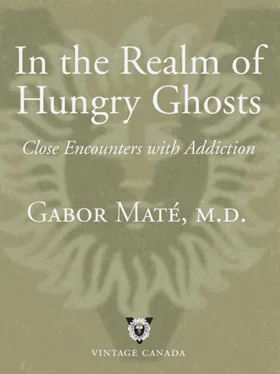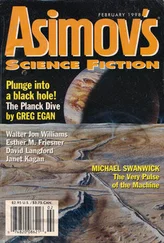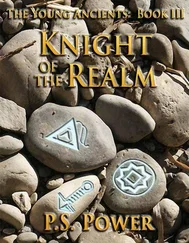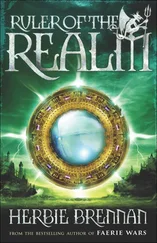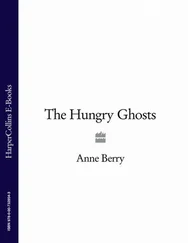We know that the addicted brain assigns a falsely high value to the addictive object, substance or behaviour, the process called salience attribution. The addicted mind has been fooled into making the object of your addiction the highest priority. Addiction has moved in and taken over your attachment-reward and incentive-motivation circuits. Where love and vitality should be, addiction roosts. The distorted brain circuits, including the orbitofrontal cortex, are making you believe that experiences that can come authentically only from genuine intimacy, creativity or honest endeavour will be yours for the taking through addiction. In the Re-value step you de-value the false gold. You assign to it its proper worth: less than nothing.
What has this addictive urge done for me? you will ask. It has caused me to spend money heedlessly or to stuff myself when I wasn’t hungry or to be absent from the ones I love or to expend my energies on activities I later regretted. It has wasted my time. It has led me to lie and to cheat and to pretend—first to myself and then to everyone close to me. It has left me feeling ashamed and isolated. It promised joy and delivered bitterness. Such has been its real value to me; such has been the effect of my allowing some disordered brain circuits to run my life. The real “value” of my addictive compulsion has been that it has caused me to betray my true values and disregard my true goals.
Be conscious as you write out this fourth step—and do write it out, several times a day if necessary. Be specific: What has been the value of the urge in your relationship with your wife? your husband? your partner, your best friend, your children, your boss, your employees, your co-workers? What happened yesterday when you allowed the urge to rule you? What happened last week? What will happen today? Pay close attention to what you feel when you recall these events and when you foresee what’s ahead if you persist in permitting the compulsion to overpower you. Be aware. That awareness will be your guardian.
Do all this without judging yourself. You are gathering information, not conducting a criminal trial against yourself. Jesus said: “If you bring forth what is within you, what you have will save you.” *33That is true in so many ways. Within you is knowledge of the real value of the impulses you have obeyed until now. To quote and paraphrase Dr. Schwartz, the more consciously and actively you come to re-value the addictive drive in light of its pernicious influence on your life, “the more quickly and smoothly you can perform the Re-label, Re-attribute and Re-focus steps and the more steadily your brain’s ‘automatic transmission’ function returns. Re-valuing helps you shift the behavioral gears!” 5

Dr. Schwartz introduces what he calls the two A’s: Anticipate and Accept. To anticipate is to know that the compulsive drive to engage in addictive behaviour will return. There is no final victory—every moment the urge is turned away is a triumph. What is certain is that with time the addictive drive will be drained of energy if you continue to apply the four steps and also take care of the internal and external environments in the ways suggested in these chapters. If there are times when it reappears with new force, there is no reason to be disappointed or shocked by that. And accept that the addiction exists not because of yourself, but in spite of yourself. You did not come into life asking to be programmed this way. It’s not personal to you—millions of others with similar experiences have developed the same mechanisms. What is personal to you is how you respond to it in the present. Keep close to your impartial observer.
I take the liberty of suggesting a fifth step to be added to the Four-Step Self-Treatment Method, at least in the context of addiction. I call it Re-create.
Step 5: Re-create
Life, until now, has created you. You’ve been acting according to ingrained mechanisms wired into your brain before you had a choice in the matter, and it’s out of those automatic mechanisms that you’ve created the life you now have. It is time to re-create: to choose a different life.
You have values. You have passions. You have intention, talent, capability. In your heart there is love, and you want to connect that with the love in the world, in the universe. As you re-label, re-attribute, re-focus and re-value, you are releasing patterns that have held you and that you have held on to. In place of a life blighted by your addictive need for acquisition, self-soothing, admiration, oblivion, meaningless activity, what is the life you really want? What do you choose to create?
Consider, too, what activities you can engage in to express the universal human need to be creative. Mindfully honouring our creativity helps us transcend the feeling of deficient emptiness that drives addiction. Not to express our creative needs is itself a source of stress. I permit myself here to quote from the final pages of When the Body Says No, my book on illness, stress and mind-body unity:
For many years after becoming a doctor I was too caught up in my workaholism to pay attention to myself or to my deepest urges. In the rare moments I permitted any stillness, I noted a small fluttering at the pit of my belly, a barely perceptible disturbance. The faint whisper of a word would sound in my head: writing. At first I could not say whether it was heartburn or inspiration. The more I listened, the louder the message became: I needed to write, to express myself through written language not only so that others might hear me but so that I could hear myself.
The gods, we are taught, created humankind in their own image. Everyone has an urge to create. Its expression may flow through many channels: through writing, art or music or through the inventiveness of work or in any number of ways unique to all of us, whether it be cooking, gardening or the art of social discourse. The point is to honour the urge. To do so is healing for ourselves and for others; not to do so deadens our bodies and our spirits. When I did not write, I suffocated in silence.
“What is in us must out,” wrote the great Canadian stress researcher, Dr. Hans Selye, “otherwise we may explode at the wrong places or become hopelessly hemmed in by frustrations. The great art is to express our vitality through the particular channels and at the particular speed Nature foresaw for us. ”
Write down your values and intentions and, one more time, do so with conscious awareness. Envision yourself living with integrity, creative and present, being able to look people in the eye with compassion for them—and for yourself. The road to hell is not paved with good intentions. It is paved with lack of intention. Re-create. Are you afraid you will stumble? Of course you will: that’s called being a human being. And then you will take the four steps—plus one—again.
CHAPTER 32

Sobriety and the External Milieu

What matters is not the features of our character or the drives and instincts per se, but rather the stand we take toward them. And the capacity to take such a stand is what makes us human beings.
VICTOR FRANKL
The Will to Meaning
Lately, I have come to experience and appreciate the difference between abstinence and sobriety.
I’ve mentioned earlier that substance users cannot envision a life without their drug of choice. Since their addictions offer biochemical substitutes for love, connection, vitality and joy, to ask them to desist from their habits is to demand that they give up on the emotional experiences that make life worth living for them. Anne, a forty-three-year-old Vancouver college instructor, had her last drink on March 17, 1991. She has been attending AA ever since. “It became clear that I needed to stop drinking,” she recalls. “On the other hand I just kept thinking, ‘Oh, this can’t be possible because if I stop drinking how could I ever have sex again? How could I ever socialize again? You know…how could I ever sleep again? How could I ever do anything again…?’ I couldn’t imagine living without the alcohol. I thought it was helping me. That’s the nature of denial. One thinks that the addiction is actually enhancing one’s life, bettering one’s life, satisfying a basic need.”
Читать дальше
